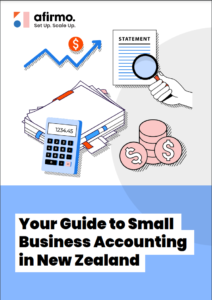Starting and running a small business is no small feat. If you’re a small business owner, then you know the importance of having a steady cash flow and making smart financial decisions. But have you considered how crucial it is for you to understand financial statements like Profit and Loss, the Balance Sheet, and Cashflow Statements?
One of the biggest benefits of understanding financial statements is that it enables you to make better financial decisions. Having a clear picture of your cash inflow and outflow makes it easier to identify trends in how money is spent within your business. It is also particularly important when it comes to analysing investment opportunities.
By understanding the inflow and outflow of your cash, you can make informed decisions about investment opportunities, such as purchasing new equipment, building a new facility, or hiring new employees. You can also have a better understanding of what your business can afford at any given moment and what it can’t.
Let’s explore why understanding these financial statements is vital for you as a small business owner. You’ll learn how staying on top of your finances will help you make informed decisions that will lead to long-term success.
Profit and Loss statement
The Profit and Loss statement, also known as the income statement, shows how much revenue your business has generated, and the expenses incurred during a specific period.
Understanding this statement is essential because it helps you to determine the profitability of your business. By evaluating the revenue versus the expenditure, you can identify areas where you can cut costs, as well as places where your revenue can be increased. You can also use this to understand the gross margin your business makes on sales.
This statement also gives an ideal overview of the efficacy of your business efforts. If you look at your revenues and expenses over time, you’ll be able to evaluate how well you’re doing and pinpoint areas that may be inhibiting your growth. Additionally, investors and banks review this statement when considering investment opportunities, so it’s crucial to understand it to make informed decisions.
The Balance Sheet
The Balance Sheet gives you an overview of the overall financial health of your business at a given point in time, and shows the assets, liabilities, and equity of the business.
- Assets refer to what your business owns or has control of, including cash, investments, and property.
- Liabilities refer to what your business owes, including debts and accounts payable.
- Equity is the difference between assets and liabilities and is the value owned by you – the owner, or shareholders depending on your business type.
Understanding your Balance Sheet enables you to improve cash flow management by pointing out the excess of funds left after paying out liabilities. This cash flow surplus can be reinvested to grow the business or ensure ongoing sustainability.
Cash Flow Statement
Your Cash Flow statement shows the amount of cash coming in and out of your business during a specific period and reflects how well your business generates cash.
Cash flow is one of the most important parameters you, as a business owner needs to track as this show how much money is on hand to pay expenses, reinvest in the business, or make more significant investments.
Your Cash Flow statement separates the cash inflows and outflows into three categories, including operating, investing, and financing activities.
- The operating activities include the day-to-day operations, including sales.
- Investing activities include capital expenditures like property, plant, and equipment.
- Financing activities: reflect any debts, leasing, or investment payouts.
Conclusion:
For small business owners, understanding financial statements is crucial. They give business owners vital information about their financial performance, enabling them to make informed decisions about management and investments.
Understanding financial statements is vital in helping business owners keep track of cash flow, see the overall health of the business, identify areas for improvement, and stay on track towards long-term success.


